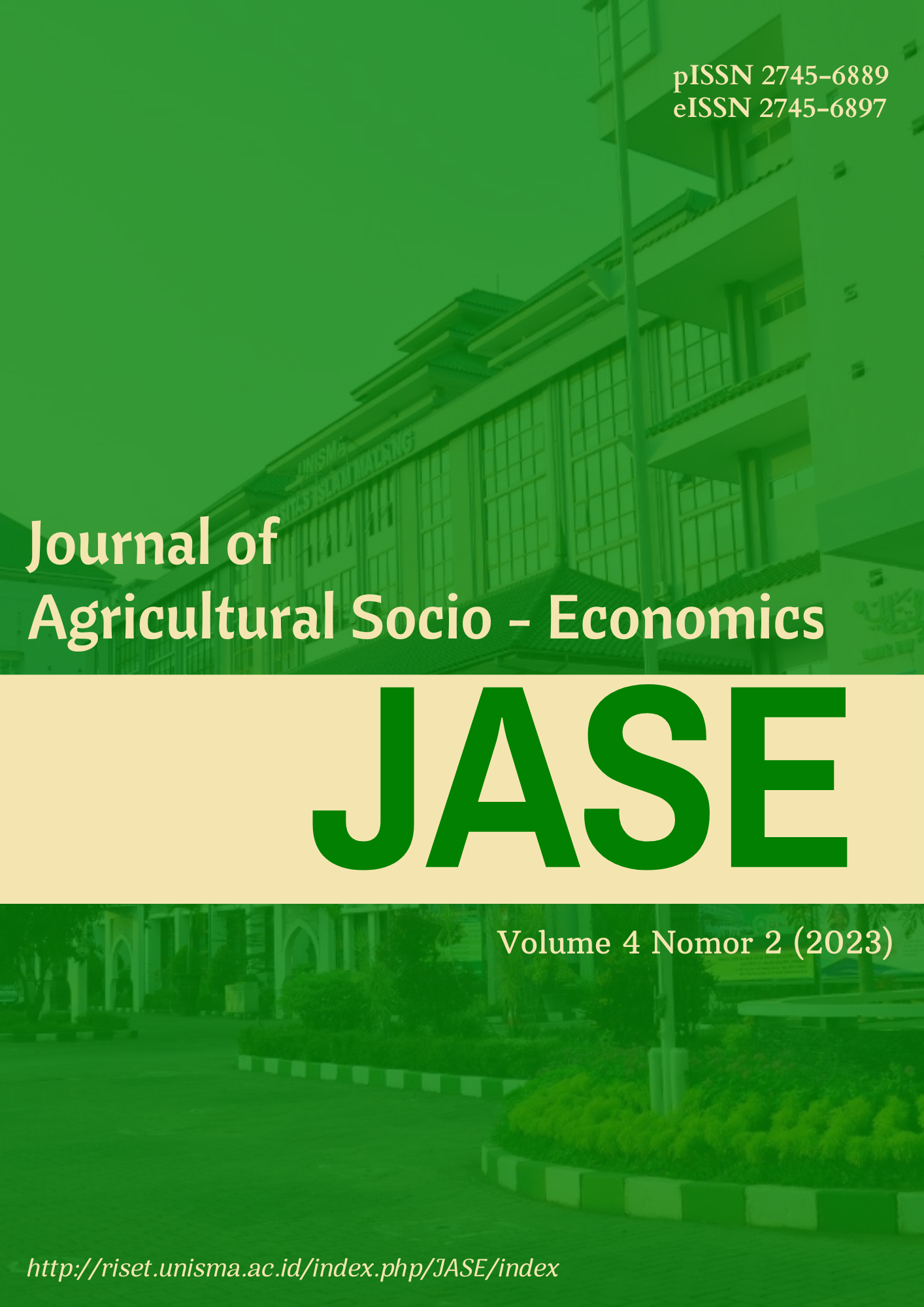FOOD AND NON-FOOD EXPENDITURE PATTERNS IN PRE-PROSPEROUS AND PROSPEROUS FAMILIES-1 IN THE RURAL AREAS OF SEMIRINGKAI
DOI:
https://doi.org/10.33474/jase.v4i2.21255Abstract
Observation of food and non-food expenditure patterns of families in semi-arid areas, East Nusa Tenggara Province is important, in order to evaluate the economic welfare of families. The focus of this research is to compare expenditure patterns between families who are in pre-prosperous conditions. A pre-prosperous family refers to a family with a low level of economic welfare or below the poverty line, while a prosperous family is a family that has a higher level of economic welfare and is sufficient to meet their basic needs. The research used 100 respondents consisting of 50 pre-prosperous families and 50 respondents from prosperous families. The data were analyzed using Chi Square to see differences in food and non-food expenditure patterns between the two levels of welfare. This research found that in underprivileged families the expenditure pattern for food was greater, namely 56.39%, compared to non-food expenditure of 43.61%. In a prosperous family, expenditure on food is greater, namely 56.75%, compared to non-food expenditure of 43.25%. This shows that the largest proportion of expenditure in both families is for food. However, there is a tendency that higher family income will increase non-food spending, even though it is relatively small. The various types of food and non-food consumed by pre-prosperous and prosperous-1 families show the same pattern. However, the proportions are different in the pre-prosperous and prosperous-1 family groups following differences in income. The variety of types of food and non-food commodities available in the Semiringkai area is relatively limited, because agricultural products are seasonal and economic activities have not yet been developed. It is necessary to develop community empowerment in accordance with regional potential for business diversification and build the community's local economy.
Downloads
Published
How to Cite
Issue
Section
License
Copyright (c) 2024 Doppy Roy Nendissa, Maria Budi, Ernantje Hendrik, Yenny Raja Kana

This work is licensed under a Creative Commons Attribution-ShareAlike 4.0 International License.
JASE: Journal of Agricultural Socio-Economics with a registration number of ISSN xxxx-xxxx (printed) and xxxx-xxxx(online) published by the Department of Agribusiness, Faculty of Agriculture at the University of Islam Malang by applying for copyright and License.
Copyright:
- Copyright in each text is the property of the author.
- The author agrees that JASE has the right to the first license issued with a Creative Commons Attributions-ShareAlike 4.0 International License.
- The author can write the article separately through non-exclusive distribution with other versions related to the article that was first published in the JASE : Journal of Agricultural Socio-Economics.
Licence:
- Attribution: You must give appropriate credit, provide a link to the license, and indicate if changes were made. You may do so in any reasonable manner, but not in any way that suggests the licensor endorses you or your use.
- ShareAlike: If you remix, transform, or build upon the material, you must distribute your contributions under the same license as the original.
- No additional restrictions: You may not apply legal terms or technological measures that legally restrict others from doing anything the license permits.
You are accessible to:
- Share a copy and redistribute this material in any form or format.
- Change and make derivatives of this material for any purpose, including commercial interests.
- The licensor cannot revoke the above conditions as long as the authors comply with the terms of this license.
Â

This work is licensed under a Creative Commons Attribution-ShareAlike 4.0 International License.








_-_Copy.jpg)

